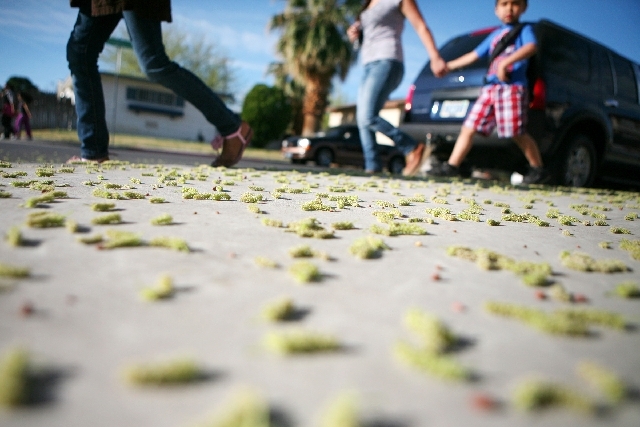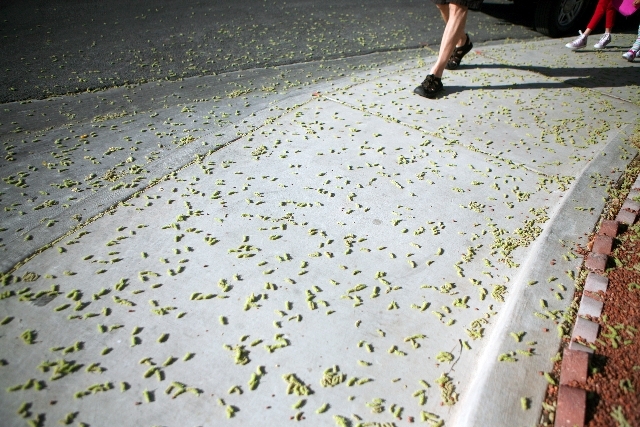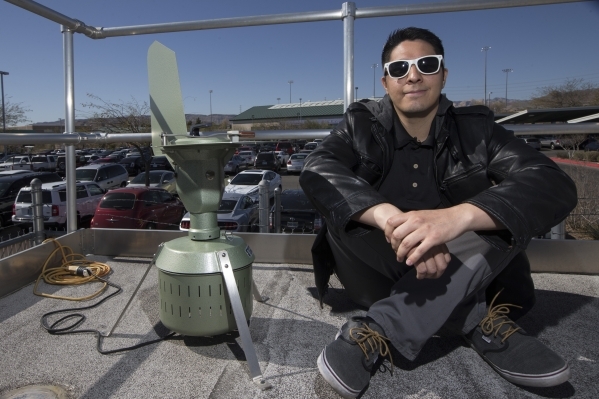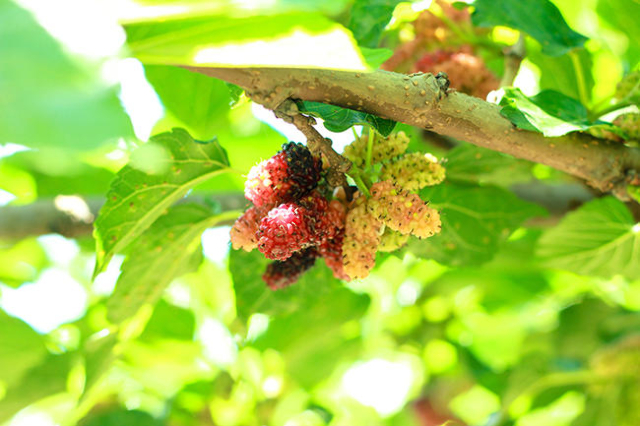UNLV confirms pollen, allergy season popped early — VIDEO
Like a TV election ad or Christmas music at the mall, allergy season seems to show up earlier and earlier every year. And that's not just the over-the-counter antihistamine talking.
According to the folks at UNLV who track such things, the pollen did indeed pop a week or two sooner than normal this year, spurred by unusually warm temperatures. Then came the wind to spread all those irritating pollen grains around, and, just like that, everyone everywhere suddenly seems to have the sniffles and a cough.
"Over the weekend, I saw mulberry come out of nowhere," said Tanvi Patel, supervisor for the pollen monitoring program and its only paid staff member.
You can easily see it, too, in the daily pollen reports Patel's team collects from a rooftop monitoring station at UNLV and feeds to a website hosted by the American Academy of Allergy, Asthma & Immunology's National Allergy Bureau. On Feb. 19, there was no mulberry. On Feb. 20: mulberry.
So that's the bad news. Here's how it gets worse: An early start to the pollen season does not mean an early finish.
"Once the flowers are blooming, it really would take a lot for them to stop," Patel said.
So barring something improbable such as a hard cold snap or the End of Days, the only real relief allergy sufferers can look forward to — if you can even call it relief — is the flower-wilting fury of summer heat.
Patel feels your pain. She has seasonal allergies, too.
"It's definitely mulberry and olive," she said, two of the worst allergens out there, at least in the Las Vegas Valley.
Lucky for her, the thousands upon thousands of tiny pollen grains she helps count by hand are safely sealed away on microscope slides in a climate-controlled lab, where they can't make anyone sneeze. But there's no escaping them if she has to go outside to collect samples from monitoring stations around the valley.
"That does come as an occupational hazard," Patel said.
UNLV and the Clark County School District revived the pollen monitoring program in 2014 with cooperation from a local allergist and the Clark County Department of Air Quality, which tracked pollen levels for years until funding dried up in 2010.
The program now has sampling stations at UNLV, Palo Verde High School in Summerlin, Neal Elementary School in the northwest valley, Mack Middle School in the east valley, and J.D. Smith Middle School in the central valley. A station in the desert near Jean serves as what scientists call a "control."
"There's not much going on in Jean," Patel said. "Once in a while we'll see some tree pollen out there if the wind is blowing the right direction."
The monitors hope to add at least two more stations — one each in the southwest and Henderson — as soon as they have funding for equipment and another helper or two to read them.
As it is now, the program gets by with just three people, two of them UNLV graduate students, and what Patel called the "pollen truck," a university vehicle they drive when collecting samples.
All the effort is worth it, Patel said, because the data can feed research into everything from asthma to climate change. It's also useful to seasonal sufferers who just want to know what fresh hell awaits, or those still trying to figure out exactly what they're allergic to.
UNLV graduate student David Rivas joined the pollen team about three months ago to advance his study of epidemiology and bio-statistics. He's hoping the work will also help him pinpoint which of the valley's plants seem to be trying to kill him.
"I grew up with mild allergies in California," Rivas said. "When I moved here to Las Vegas, they got worse."
— Contact Henry Brean at hbrean@reviewjournal.com or 702-383-0350. Find him on Twitter: @RefriedBrean
TIPS TO EASE YOUR PAIN
-- Keep the windows closed on your house and car. Run the air conditioner in recirculation mode.
-- If you have to go out, wear a mask over your nose and mouth and "engulfing" sunglasses to protect your eyes from irritants.
-- Shower and wash your hair before you go to bed at night. Rinse your nose with saline solution.
-- Change your clothes and keep your unwashed laundry away from where you sleep.
-- Keep your pet indoors as much as possible and don’t let it on your bed after it has been outside.
-- For most people, allergy symptoms are worst in the morning, so take long-lasting allergy medication before you go to bed at night so you are protected when you awake.




















